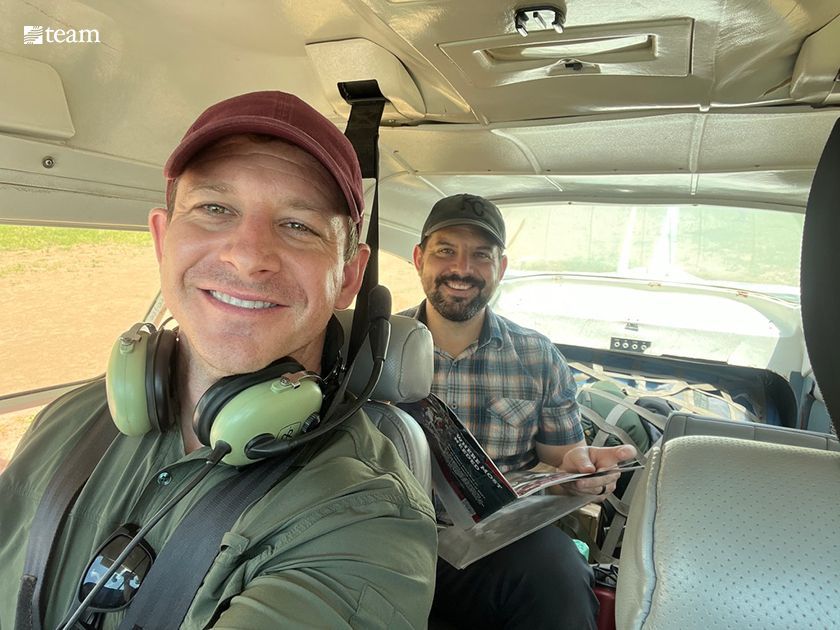This week, missions writer Amy Walters of SEND International shares tips on improving the venerable and ubiquitous missionary newsletter.
I read a lot of missionary newsletters — about 100 every month.
As part of my job, newsletters are some of my main sources of stories and information. I also serve on my church’s missions committee. So between the two, I’ve seen newsletters from all over the world and from a variety of missions organizations.
Some of the newsletters I read are excellent. And some, well, not so much. Missionaries have incredible stories to share — they’re on the front lines of God’s amazing work around the world. But so often, the good stuff gets buried under a pile of newsletter blunders.
It doesn’t have to be this way. The key to a great missionary newsletter is balance and tone. Here are 13 common newsletter mistakes with examples from actual newsletters (with names changed, of course), followed by some tips for making your newsletter engaging.
1. The Banker
Nothing but support updates and requests for money. Oh, and maybe a story about visiting a church and asking for money. “It’s not too late to join our team!” Fundraising is itself a type of ministry , so tell us about how even that process is changing you, your family, and others more into the likeness of Christ.
2. The Cluster Bomb
No communication for months and then a sudden rush of updates. Often this happens when the missionary needs something, like more support or home service is coming. “At the risk of sounding like a broken record, we will give another report about how wonderful our time was on our recent trip!”
3. The Itinerary
Basically, a long list of activities and locations in paragraph form. The audience feels tired after reading it and bouncing from one place to the next. “We were able to combine visits to see Kim’s father in Pennsylvania, children and grandchildren in Lynchburg, Virginia, and Buffalo, New York, to meeting friends and attending a new career conference in Ocean City, New Jersey.”
These are important details, but don’t make them the focus. Break them out in a more appealing format like a sidebar or a graphic.
4. The Treasure Hunt
Mostly filled with cultural tidbits and mundane details. But buried somewhere deep inside, like in a sidebar or at the very end of a long letter, is a great ministry story. [After nine paragraphs about other things] “Praise God for a girl in my class who has now received assurance of salvation.”
5. The Novel
Anything longer than three pages. This usually happens because the missionary hasn’t written in months. “And one more thing…” The shorter your newsletter, the more of it people will actually read.
6. The Christmas Letter
Almost entirely made up of family updates, with little or nothing said about ministry. Added bonus: long description and pictures of a recent family vacation to an exotic location. “Another family invited us to join them at a nearby resort.”
7. The Cliff Hanger
A desperate call for prayer or help that is not followed up or resolved in your next missionary newsletter. “Ended up in hospital, trying to find what’s going on. Our life here is but a moment, so easy to take it for granted.” If you’ve asked your readers to pray for something, be sure to update them about it, even if it’s not the answer you expected or hoped for.
8. Generic
As boring as the title, either from lack of interesting details or mainly focusing on day-to-day stuff. So general that it could be cut and pasted into anyone’s newsletter and still apply. “While at home, I did a lot of cleaning, sorting and washing windows.” Your ministry may feel mundane at times, but God is still up to something in the midst of that. Try to put your finger on it.
9. The Shock and Awe
Too much going on, from too many different font styles, to too many colors and clip art and photos and graphs and sections. The eyes don’t know where to look first. Keep it simple and cohesive.
10. The Snooze and Blah
No pictures. No colors. No graphics. Just words. Your readers don’t expect you to be a graphic designer, but try to spice it up a little.
11. The Judge
A negative assessment of the host culture, either subtle or blatant. “Is it possible to be both different and wrong?” Sin shows itself in all cultures and it’s OK to point that out, as long as we don’t lose sight of the plank in our own eye.
12. The Gory Details
Goes into great detail about something incredibly gross or personal, like a recent surgery or explosive illness. Also could include pictures. “We could admire the iron in our toilet bowl.” Some of your readers — especially those who don’t know you well — will not know what to make of this.
13. The Bait and Switch
Teases you with the promise of a great story but instead gets sidetracked with related but unimportant details. “So we landed in [the city], got in a van and rode out to join the teen camp that was starting the next day. 10 days later, we took part in the English camp. The time at the camp definitely got us back into life here quickly.”
The problem here isn’t that they are telling us about this great camp, but that they actually aren’t telling us about it at all. Something fascinating probably happened between when you rode a van and when you returned to normal life, so focus on that.
Now, I understand that there are special situations where a newsletter like those above would be appropriate. But those should be the exception to the rule, not common practice.
If you found yourself on the list, never fear! There are a few, simple solutions to help you help your newsletters.
Know your audience. Think about what they want to read and what kind of knowledge they do or do not have about where you are serving. Think about what questions they have and answer them. Treat them as a partner in ministry.
Focus on ministry. Don’t just tell us what you do. Show us with a story. And keep ministry stories front and center — don’t bury them at the end of the newsletter.
Stay balanced. Support updates, family news and cultural tidbits are great when kept in balance. Don’t let them take over the entire newsletter.
Write regularly. Be consistent in sending out your newsletter. Regular, short updates are better than once a year, long updates.
Vent only to close friends. Everyone struggles sometimes. Your newsletter is not the right place to hash it out. Find some people you can talk to and pour your heart out to them. Then when it comes to your newsletter, you can still keep your supporters informed, but they don’t need to know all the details.
I know you have wonderful stories to tell, and I am anxious to read them. Hopefully, these suggestions will help your audience find, read and connect with those stories so they can engage more fully in your ministry.




















